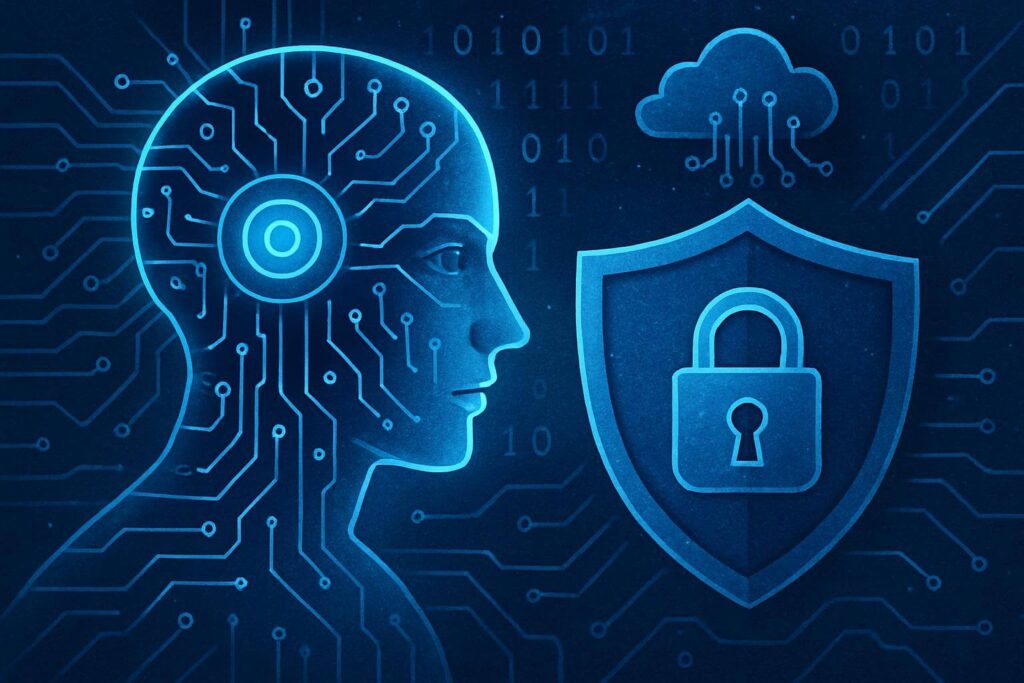
The Rise of a New Defense
The digital world never rests. Every click, transfer, and message leaves a trace. And where there is data, there are attackers. Cyber threats have grown sharper, faster, and more unpredictable over the years. In the early 2000s, cybersecurity mostly relied on human monitoring and traditional firewalls. It worked — for a while. But as hackers got smarter, humans alone couldn’t keep up.
That’s when artificial intelligence entered the field. AI changed how defense worked. It could think, learn, and react faster than any team of analysts. It turned the fight against cybercrime from a slow chase into a real-time battle. Today, AI and cybersecurity stand side by side, defending the digital frontier with precision and speed.
How AI Transformed Cybersecurity
AI doesn’t wait for instructions. It learns from experience. By studying data, traffic patterns, and user behavior, it detects danger before it strikes. The magic lies in its ability to spot what humans can’t — small anomalies that signal a breach.
In older systems, security tools reacted only after an attack occurred. AI changed that. It predicts, prevents, and isolates threats within seconds. When a virus appears, AI traces its source, studies its movement, and shuts it down instantly.
Machine learning models also help detect phishing attacks and identity theft attempts. They analyze text, tone, and timing to expose scams that even trained users might miss. It’s like having a digital guard dog that sniffs out intruders long before they reach the door.
The twist here? The same intelligence that protects systems also learns from the chaos it fights. Each attack makes AI stronger, not weaker.
The Dark Side of Smart Technology
But the story doesn’t stop at defense. Hackers have also learned to use AI. The digital battlefield has become a mirror — both sides using the same weapon.
Cybercriminals now create AI-driven malware that hides itself from scanners. They use machine learning to crack passwords, mimic human speech, and generate fake voices. Deepfake technology can even make videos of people saying or doing things they never did.
This shift has made the fight more complex. It’s no longer human versus hacker; it’s machine versus machine. And when both sides learn, adapt, and evolve, the battle never truly ends.
That’s the twist of modern cybersecurity — intelligence has no loyalty. It serves whoever trains it best. The line between defense and attack now depends on intention, not technology.
Humans and Machines: The Perfect Alliance
Even with all its brilliance, AI can’t win alone. It lacks human judgment. It sees data, not ethics. That’s why experts play a crucial role. Cybersecurity professionals guide AI systems, teach them context, and decide how to act on their alerts.
This partnership between humans and machines has become the foundation of modern defense. AI handles the endless flood of information. Humans interpret the meaning behind it. The result is speed with sense — a perfect mix of calculation and conscience.
Training AI is also an ongoing process. Every update, every false alarm, and every new threat helps refine its understanding. The more humans teach, the better AI becomes at protecting them. In return, AI gives analysts the time and insight to focus on bigger problems instead of drowning in data.
Together, they form a dynamic alliance — one that keeps learning from every battle in the digital war.
The Future of AI and Cybersecurity
The alliance between AI and cybersecurity will only grow stronger. Future systems will defend entire networks automatically. They will repair vulnerabilities, restore stolen data, and predict attacks across borders. The dream of self-healing digital systems is already within reach.
But this future brings questions too. How much control should we give machines? Can we trust AI to make critical security decisions on its own? If a defense system learns to act without human input, who takes responsibility when it makes a mistake?
The answer lies in balance. AI must remain a tool, not a ruler. Human oversight will always be the final layer of defense. The real battle isn’t just against hackers — it’s about keeping technology ethical, transparent, and accountable.
The twist is simple yet powerful: as AI protects us from cyber threats, we must also protect it from misuse.
Beyond the Firewall
AI and cybersecurity have turned digital defense into an intelligent art. What started as a fight against viruses and spam has become a war of algorithms and adaptation. Each side learns, counters, and evolves — faster than ever before.
The alliance between AI and cybersecurity represents more than protection. It’s proof that intelligence, whether human or artificial, can be a shield when guided by purpose. The future won’t just be about stronger code or faster machines. It will be about harmony — between data and decision, between humans and the intelligence they create.
In this endless digital battlefield, victory belongs not to the smartest machine, but to the wisest partnership.






